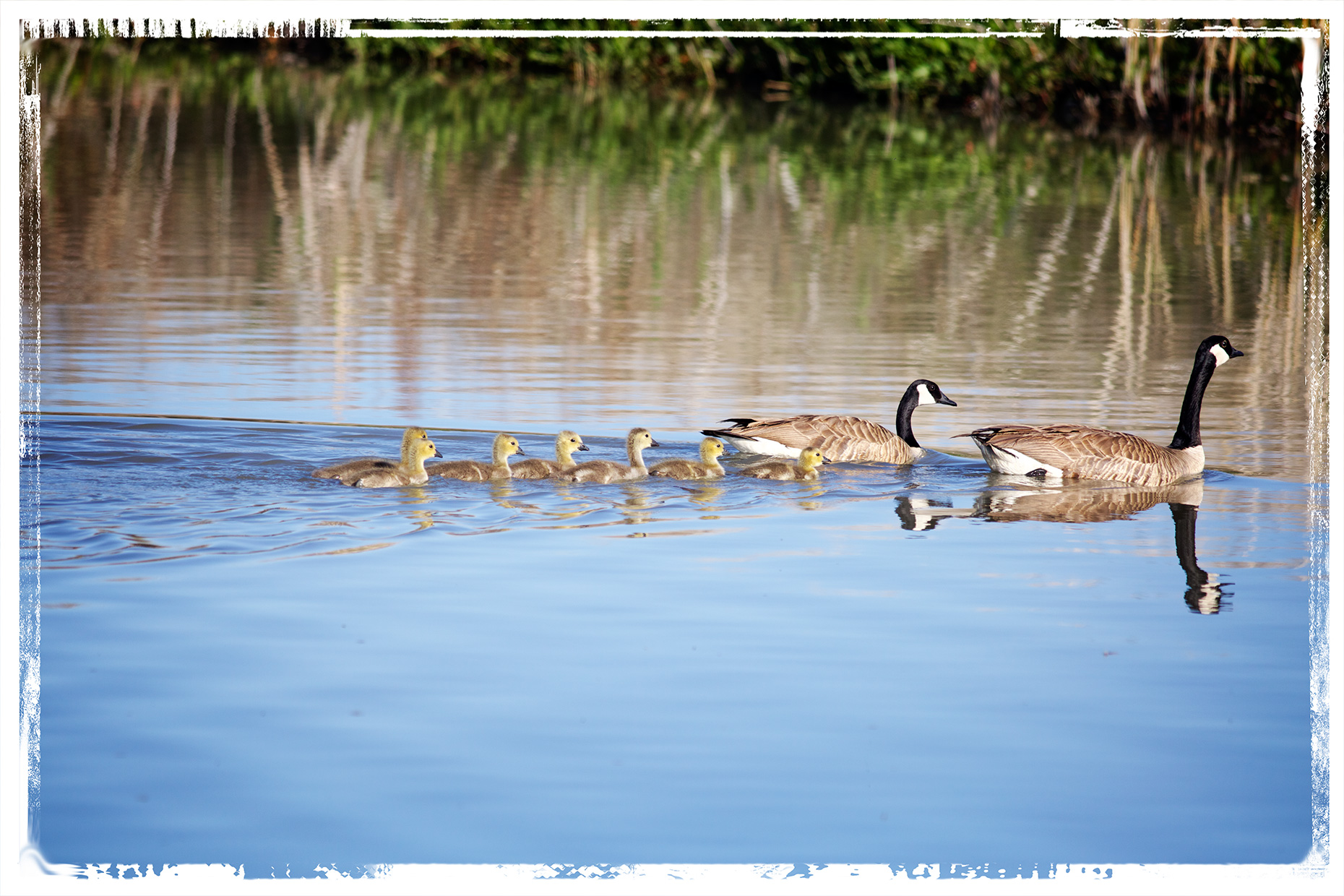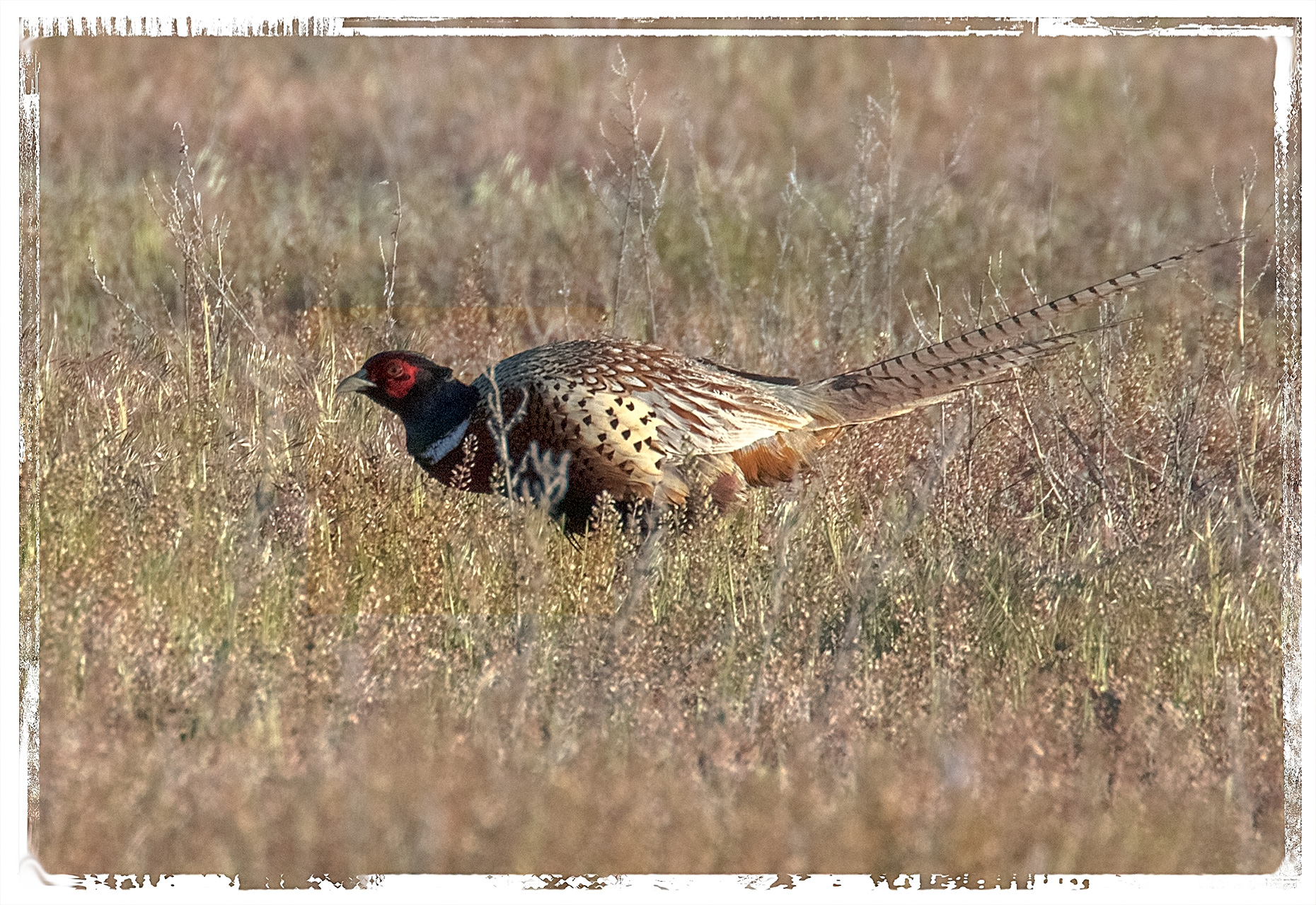After buying a new camera, I decided to give my old camera to Tyson and family to replace one I had given them several years ago. Logan seemed particularly excited to use the camera, and he and I went out birding several times. His dad even helped him to download a photo editor, and we probably spent more time learning how to use that program than we did birding.
It’s been a long time since I taught photography classes in high school, but I thought that Logan picked up the basics of photographing birds than many of the students I taught. Considering the limitations of using a 300mm lens for birding, he did a great job of capturing shots of a large variety of birds, helping me to spot several I’m sure I would have missed if hadn’t sighted them first. I’m not sure this is really his best shot, but this shot of a Eurasian Collared-Dove is his favorite,
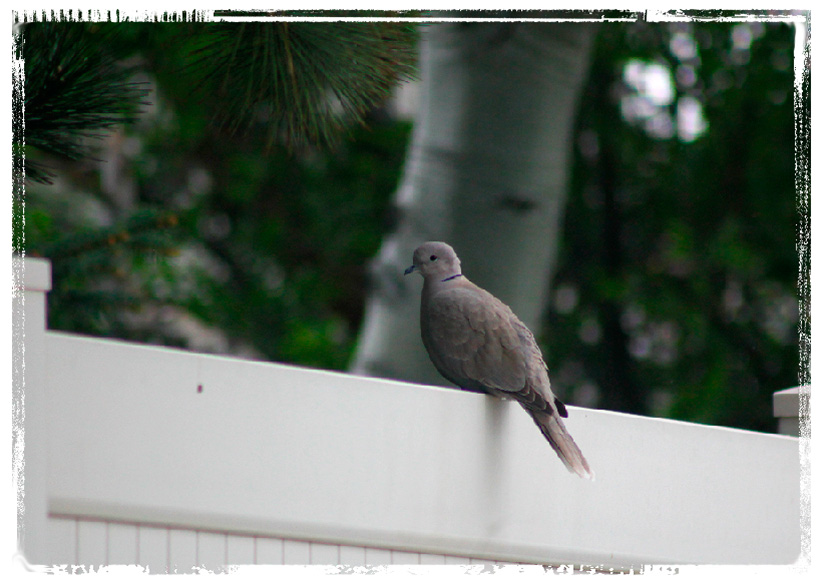
possibly because he photographed it when I wasn’t even there. It’s always fun to be around the grandkids, but it’s special when one shares a common interest.
Another advantage is that I don’t have to feel guilty why birding if I have a grandson with me, and I love birding areas other than home because I manage to get shots of birds I seldom, or never see. I’ve actually seen this Blue-Winged Teal
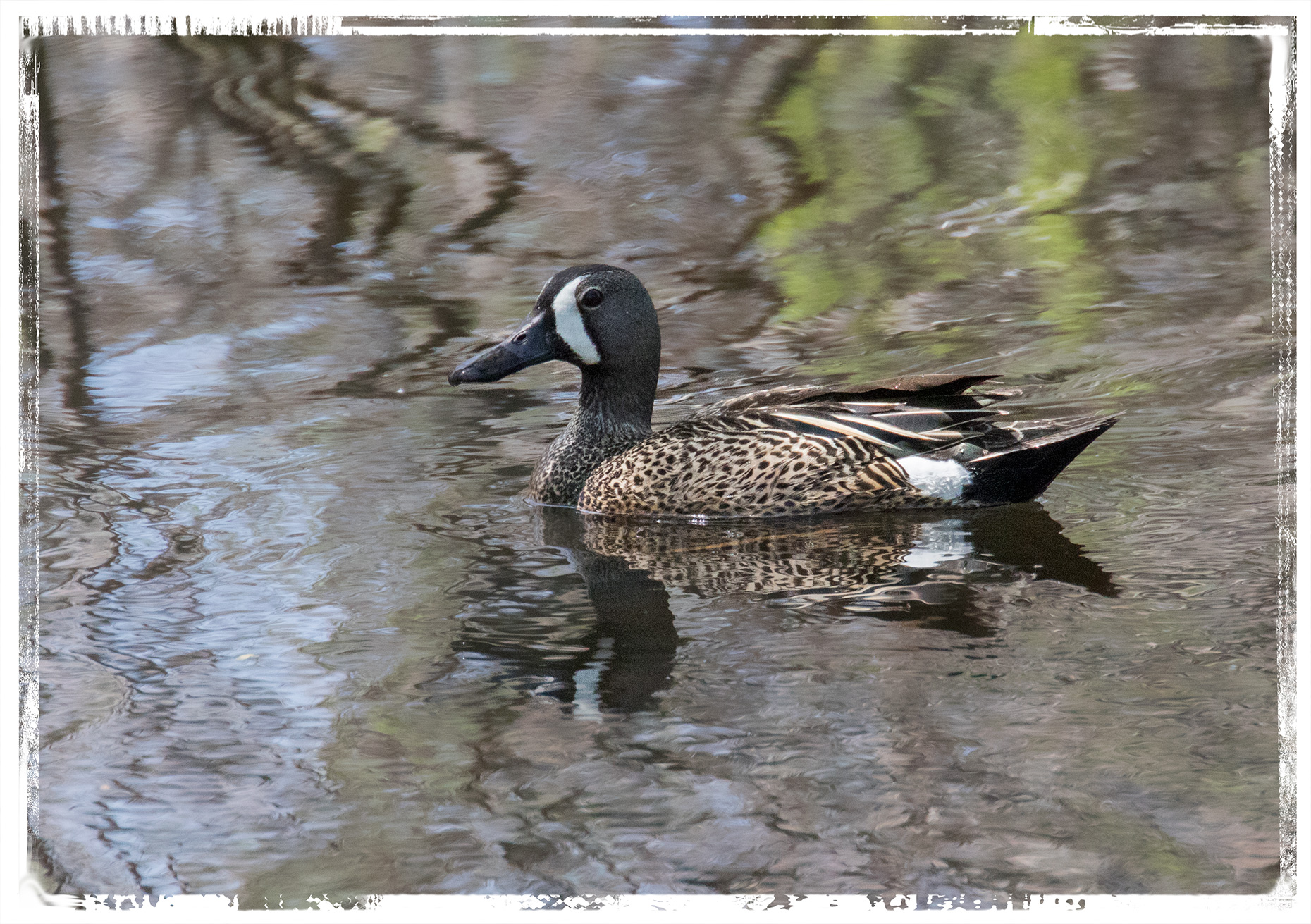
a few times in Washington and a few times in California, but I’ve never managed to get this close to one anywhere else.
Somehow I knew that this was a Common Grackle
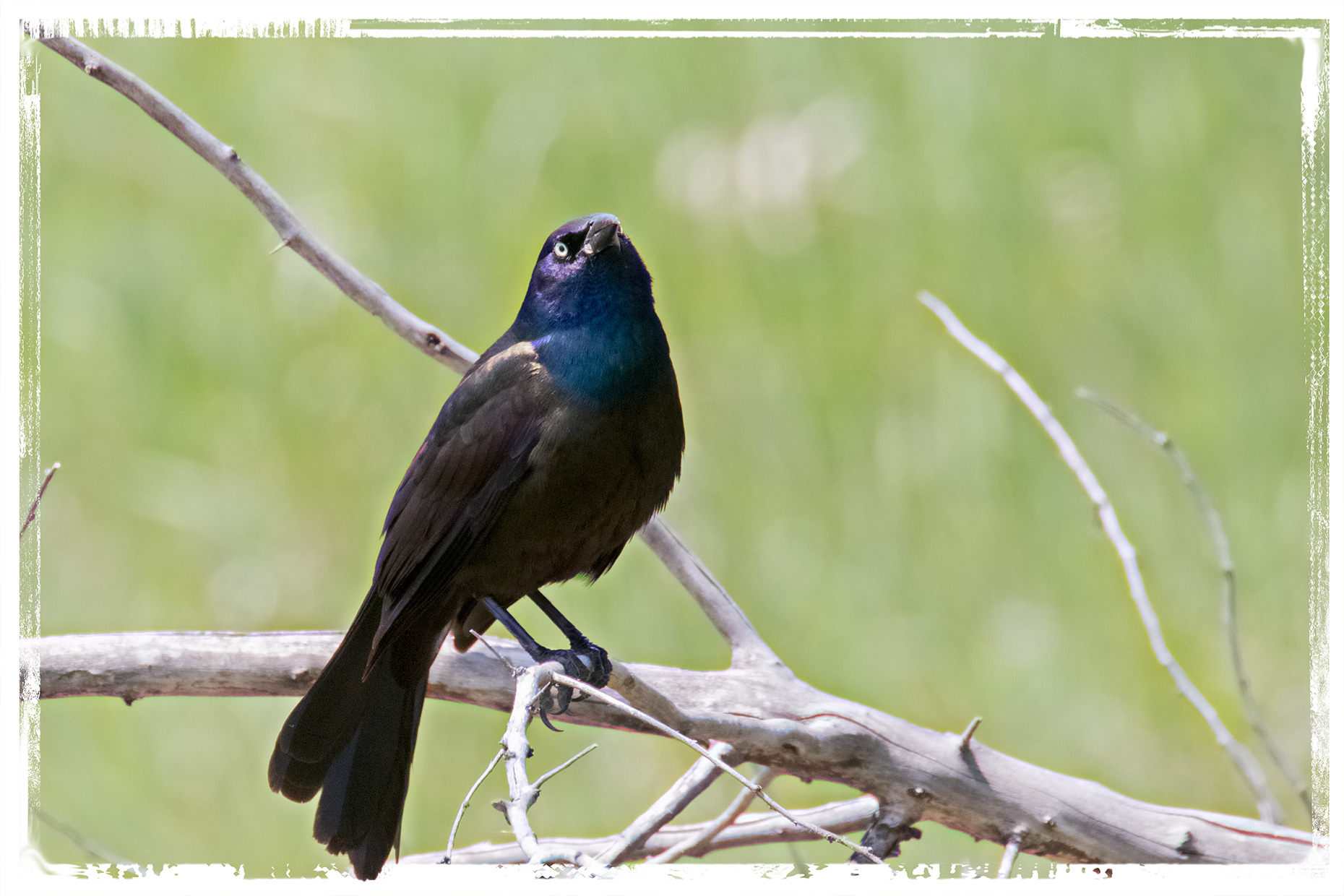
when I finally got close enough to it, but I couldn’t identify it when it kept flying over me earlier. I knew it wasn’t a crow or Red-Winged Blackbird because of the length of its tail, but I couldn’t tell what it was until I got a lot closer.
On our last day birding I told Logan that I would really like to see a Blue Jay because I hadn’t seen one on this trip. We were on our way back to his game when we spotted a small flock of them, giving me the best chance I’ve had of getting a shot of one.
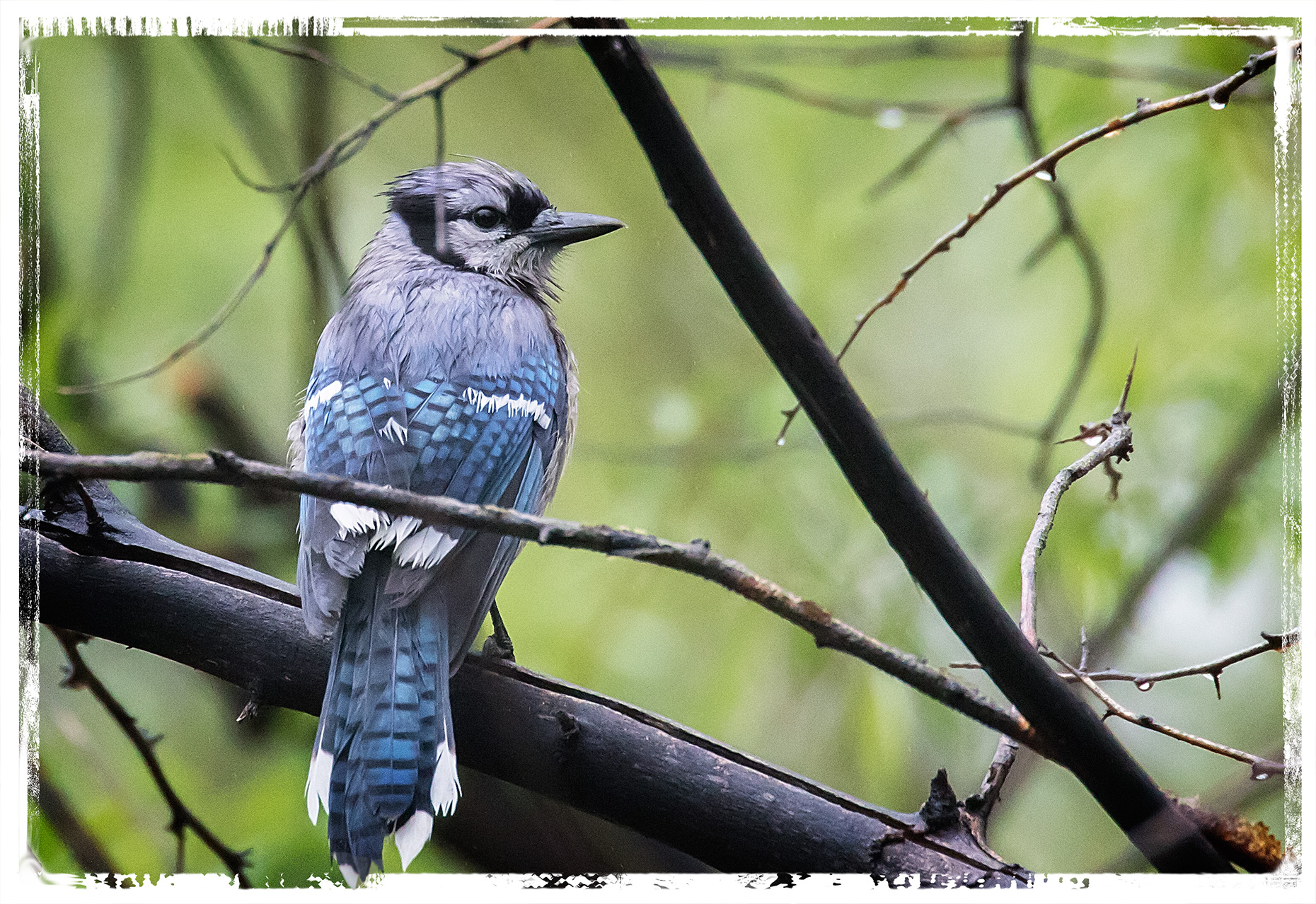
This one looks a little bedraggled because of the constant drizzle, but I still like the shot.
My other target bird was the Kestrel, a bird I can always spot in the open space right outside Logan’s house. Unfortunately, it was overcast or raining almost all the time we were there. I finally went out despite the clouds and Logan spotted this bird. It was so dark that I didn’t recognize the kestrel at first, and it took all the magic of Lightroom, Photoshop, and ON1 Photo 10 to make it look like a kestrel.
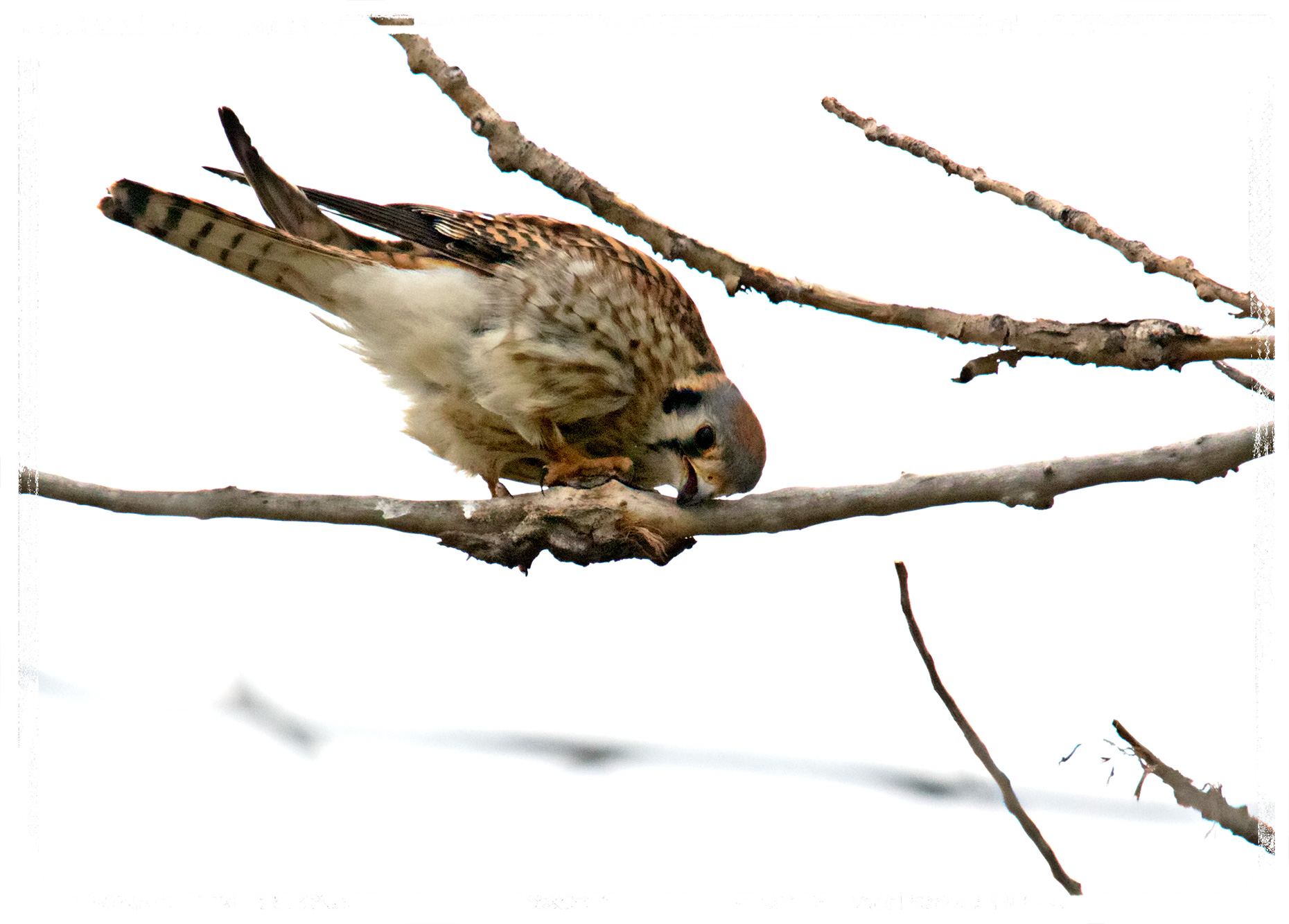
Logan has promised me he will get a better shot of the Kestrel when the weather improves so I’m looking forward to seeing a shot soon.
Like this:
Like Loading...






